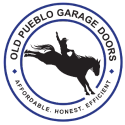A garage door is a vital component of your home, responsible for guarding your vehicles and other valuable possessions and providing easy access to your living space. However, homeowners often overlook the importance of regular maintenance, leading to decreased functionality and, at times, costly repair situations. Preventive maintenance is an essential practice to ensure your garage door continues to perform efficiently, providing you with reliability, convenience, and peace of mind.
In this comprehensive guide, we will explore a series of preventive maintenance tips and best practices that can help you keep your garage door in peak condition. By undertaking these proactive measures, you can effectively extend the lifespan of your garage door components, enhance the overall safety of your home, and potentially avoid expensive repair or replacement costs. Our aim is to equip you with the necessary knowledge and skills to enable you to carry out routine maintenance with confidence and precision, bolstering your garage door’s performance and durability.
As garage door professionals, we recognize the significance of preventive maintenance in maintaining the reliability and longevity of your garage door system. We strive to provide our customers with practical advice, insights, and strategies to guarantee the smooth operation of their garage doors for years to come.
Visual Inspection
Conducting a visual inspection of your garage door system is a simple yet effective first step in monitoring its condition. Regularly examine key components for potential issues, including:
1. Springs: Check for rust, corrosion, or any visible signs of wear and tear. A broken spring can be hazardous and must be replaced immediately by a professional.
2. Tracks: Ensure the tracks are level and aligned correctly. Identify any bends, dents, or gaps that may impede the smooth movement of the door.
3. Cables and pulleys: Inspect cables for fraying or damage, and make sure the pulleys are functioning smoothly and without resistance.
4. Weather-stripping and seals: Examine weather-stripping and seals for signs of wear, cracking, or deterioration, replacing them as needed.
Lubrication of Moving Parts
Proper lubrication of your garage door’s moving parts is crucial in minimizing friction and ensuring smooth operation. Components that often require lubrication include:
1. Hinges: Apply a silicone-based lubricant to the hinges, ensuring they move freely and without excess noise.
2. Rollers: Lubricate the rollers and wheel bearings with a high-quality garage door lubricant, avoiding the use of WD-40, as it can cause debris buildup.
3. Springs: Apply a light coating of lubricant to the springs, particularly ensuring that the areas where the coils meet are sufficiently lubricated.
4. Chain or screw drive: For chain and screw drive openers, lubricate the drive mechanism sparingly with white lithium grease.
Note: It’s essential to clean the components with a soft cloth and remove any old, built-up lubricant before applying a new coat.
Testing Safety Features
Your garage door is equipped with several safety features to protect you and your loved ones. Regularly testing these features ensures they function effectively when needed:
1. Auto-reverse mechanism: Place a sturdy object, such as a wooden block, on the ground beneath the garage door. When the door is closing, it should reverse direction when contacting the object. If it doesn’t reverse, the auto-reverse mechanism may need adjustment or repair.
2. Photo-eye sensors: Test the photo-eye sensors by waving an object, like a broomstick, in front of the sensors as the door is closing. If the door doesn’t immediately reverse direction, ensure the sensors are properly aligned and clean.
Tightening Hardware
Over time, the continuous movement of your garage door may cause some hardware to loosen. Make it a habit to inspect and tighten necessary components, including:
1. Bolts: Check the brackets securing your garage door tracks, opener, and other components, tightening any loose bolts.
2. Hinge and roller screws: Examine the screws attaching the hinges and rollers to the door panels, ensuring they are secure and tightly fastened.
Schedule Professional Maintenance
While the preventive maintenance tips provided here will contribute significantly to maintaining your garage door, it’s crucial to schedule regular professional inspections, maintenance, and tune-ups. Professional technicians can identify any potential issues you may have missed and can address more complex repairs or adjustments, ensuring your garage door operates efficiently and safely.
Conclusion
A well-maintained garage door delivers optimal performance, reliability, and longevity, ultimately saving you time and money by preventing costly repairs or replacements. By incorporating the preventive maintenance tips discussed in this article, you are making a conscious effort to preserve the functionality and enhance the lifespan of your garage door system.
At Old Pueblo Garage Doors LLC, we are committed to helping homeowners protect their investments by providing top-quality maintenance, repair, and installation services. When it’s time to choose a knowledgeable specialist for the maintenance of your garage door, our team of experienced garage door contractors is ready to ensure your door remains a dependable, secure, and efficient asset to your home.
